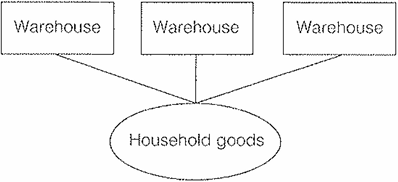
The Starting Point/Opening Scene
 المؤلف:
BARBARA MINTO
المؤلف:
BARBARA MINTO
 المصدر:
THE MINTO PYRAMID PRINCIPLE
المصدر:
THE MINTO PYRAMID PRINCIPLE
 الجزء والصفحة:
127-8
الجزء والصفحة:
127-8
 2024-09-17
2024-09-17
 949
949
The Starting Point/Opening Scene
Imagine yourself seated quietly in a darkened theatre. The curtain parts and immediately you see on stage a set depicting a specific place at a particular moment in time. That is the Starting Point or Opening Scene. Then something happens that launches the action of the drama. That is the Disturbing Event.
The same process applies in defining a problem. Only here the curtain opens and you see, at a specific point in space and time, the area of your own or your client's company or industry within which the problem originated. It will likely consist of a structure or a process that you can easily visualize.

You want to sketch the layout of what you see that constitutes the area you are discussing, assuming about the level of general knowledge of the normal reader of Fortune or Business Week. Or alternatively, pretend you are beginning to tell a friend the story of the problem. What would he or she have to be able to "see" to understand what you are talking about.
"Once upon a time there was a company that distributed household goods around the country from three warehouses ...”
He would naturally get an image of the three warehouses set up to distribute goods.

Or you might say:
"Our company consists of a number of independently run businesses, each of which engages in activities in which the new technology of image processing may be appropriate."
And he might get an image like this:

At the Opening Scene stage, you want to keep your visualization simple and your description short. You can expand the prose when you write the actual words of the introduction.
 الاكثر قراءة في Writing
الاكثر قراءة في Writing
 اخر الاخبار
اخر الاخبار
اخبار العتبة العباسية المقدسة


